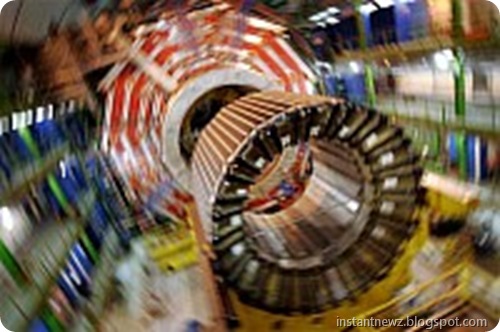CERN (Geneva): With domain names in Hindi, Arabic and Chinese set to become a reality on the web, the pundits in this science hub of
Switzerland, where the internet was arguably invented, claim the next giant leap towards internationalisation will be the grid, which is just weeks away from powering up.
The grid, made of thousands of desktops, laptops, supercomputers, data vaults, mobile phones, meteorological sensors and telescopes, will start work when proton beams collide in the world’s biggest experiment ever inside a deep tunnel here on the French-Swiss border.
It is a revolution, say scientists of the European Organization for Nuclear Research (CERN) because it uses the internet but is not the internet.
Using cloud computing, the grid will combine the computing resources of more than 100,000 processors from more than 170 sites in 34 countries and will be accessible to thousands of physicists globally. The scientists claim it will change the way the information superhighway works.
‘global computer’
Our grid will make it possible for scientists around the world to access this data real time.’’ Till now, a giant grid was considered something of a pipe dream, says Litmaath. Its implications, he says, are enormous. “Imagine several million computers from all over the world, and owned by thousands of different people. And imagine if these PCs, workstations, servers and storage elements can all be connected to form a single, huge and super-powerful computer. This sprawling, global computer is what the grid will be.’’
CERN says it is only right and proper that the giant grid be developed in the place where the world wide web was invented.
Although there are several claimants to the internet’s authorship, it was here that British software whiz Tim Berners-Lee and other scientists set the stage for the internet explosion in 1990. At the time, Berners-Lee’s boss at CERN offered the measured response-“vague but impressive’’-to the scientists’ proposed system that would allow scientists around the world to swap information on research.
It was in that proposal, written in a small room in a CERN building, that the terms “http’’ (global hypertext language) appeared for the first time. A small placard saying ‘The web was invented here’ still hangs on the door of the room where Berners-Lee and the other scientists developed the first blueprint of the internet.
The web changed the world forever and now CERN expects great results from grid computing, which, Litmaath says, will power science around the globe-scientists can share data, data storage space, computing power, and results. Together, researchers can tackle bigger questions than ever before: from disease cures and disaster management to global warming and the mysteries of the universe.
CERN already has at least three centres in India with which it shares data and expertise on a regular basis, something that can only grow exponentially.





0 comments:
Post a Comment